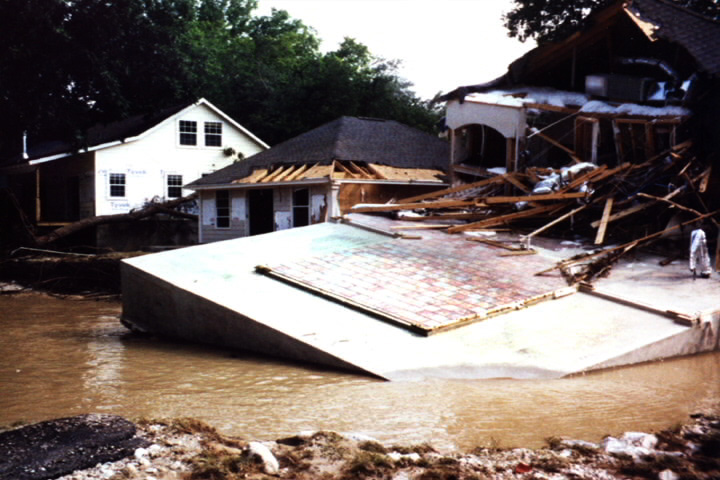Many people have heard about the 100-year-floodplain or the 500-year-floodplain. These terms can be very confusing, and do not accurately reflect the risk of a property that is near to a river or stream.
The 100-year and 500-year floodplain are terms used in the National Flood Insurance Program, and do not relate to the random nature of actual floods. The massive devastation in the Delaware River Basin in 2004, 2005 and 2006 were in many cases on

ly 35, 45 or 55-year floods according to the regulatory floodplain demarcation, but they were still dramatic, dangerous and damaging events. Damage from these sorts of storms is very common: approximately 30 percent of all flood claims come from outside of the 100-year floodplain.
We use the term “flood zone” to indicate an area that is either at high, medium or low, but still possible, risk of flooding. It is important to determine whether you are in a flood zone. The Federal Emergency Management Agency has mapped the 100 and 500-year floodplains in most areas of the country, and these “flood insurance rate maps” or “flood maps” are available here. They can be a good starting point, but are not all that you need to consider. Property owners should investigate their flood risk by researching the history of their property, through conversations with neighbors, and by investigating the geography and terrain around the property. It is also important to know whether access roads to the property flood or if they flood sooner than the property does, as this will affect evacuation plans. Even if an individual property doesn’t flood, if many homes and access roads in your neighborhood do flood, it might be wise to evacuate at the same time, to avoid being isolated in a potentially dangerous storm.
Other distinctions to make
Properties can be at higher or lower risk within a FEMA floodplain area, depending where they are located. For example, one house in the “50-year floodplain” may have their property flood 2 feet deep during a storm, but their neighbor deeper in the floodplain may flood 6 feet deep.
Another very important consideration is the nature of the terrain that gathers rainfall upstream of your property. If that area has steep hillsides and little vegetation or thin rocky soils that don’t absorb water easily, you could be subject to flash floods that can be much more powerful and dangerous than slow rising water.
If you have questions about your flood risk, contact someone from your city or county who can help you understand the potential hazards you may face. Many communities have certified floodplain managers who are trained to help you understand these issues.
